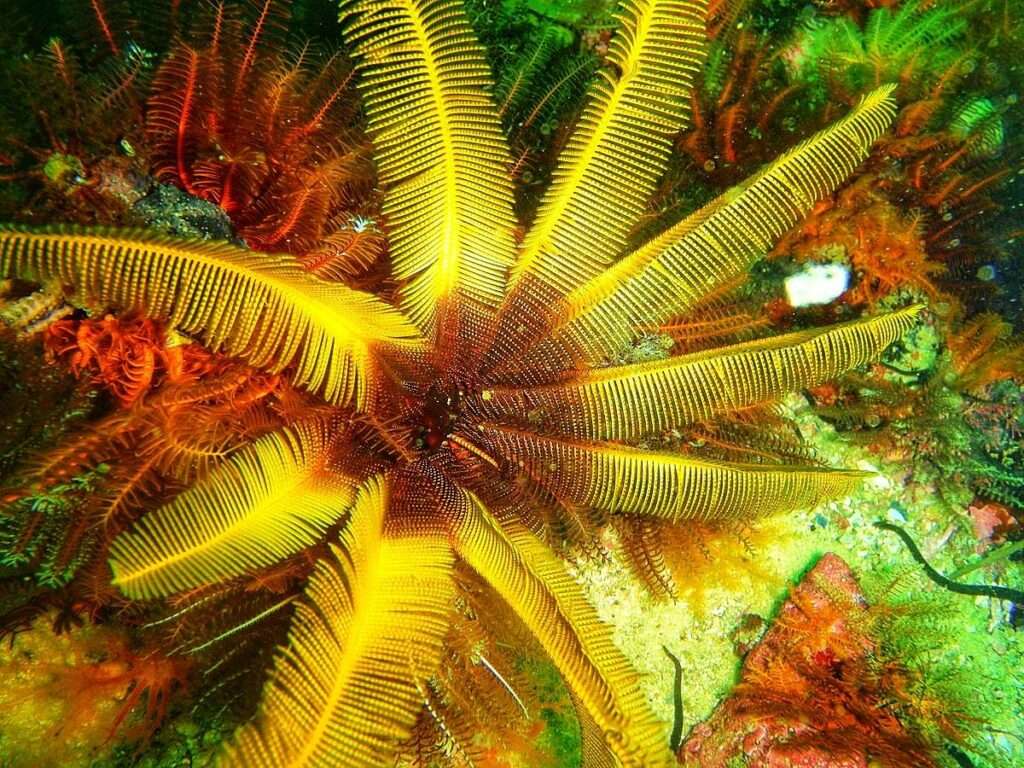
The Bennett’s feather star, or Oxycomanthus bennetti, is a type of crinoid that is a member of the Comatulidae family.
Description
One of the bigger Comatulidae species, Oxycomanthus bennetti, can reach a height of 30 cm. As a filter-feeder, it collects food suspended in the water column and consumes it rather than hunting for it. With the aid of 31–120 feathery arms that are normally held out into the water to trap food, it accomplishes this while feeding on detritus, phytoplankton, and zooplankton. For increased food-capture surface area, the arms include numerous pinnules, which resemble fingers. On the top side of the centrodorsal, the mouth is a huge, thick body.
In the early stages of its existence, O. bennetti uses these cirri to cling to substrate after the larvae have dispersed from the water column. When fully grown, they can remove the stalk and live on their own. They are born connected to a stalk, cirri holding them to the substrate. However, even after they are able to live on their own, they still employ these cirri to help them raise themselves so they can better capture food.

Distribution and habitat
The Indo-West Pacific region, which stretches from China to Australia, Bali, and Indonesia as well as from the Bay of Bengal and the Maldives to the Marshall Islands, is home to a large population of O. bennetti. Although it can be found between 5 and 25 metres deep, there is a less frequent deep water variation that dwells between 15 and 45 metres below the surface. O. bennetti is rheophilic, meaning it loves to live in areas with stronger currents, and it prefers to occupy exposed coral heads. By placing the star in this position, more food will float by it, improving nutrient intake.
Biology
Gonochoric organisms, such as O. bennetti, have both male and female members. Some of the pinnules burst during reproduction, releasing gametes into the water column. Eggs will be fertilized by sperm, and when the eggs hatch, free-swimming larvae will result. After a few days, these larvae settle down and start to grow and produce their stalk. Several kinds of polychaete worms have been discovered to live in symbiotic relationships with O. bennetti. The polychaete worms gain immensely from the feather star since it offers them food, housing, and safety, whereas O. bennetti experiences little to no negative effects from this commensalistic connection.
As Pet
Diet
This species consumes zooplankton, phytoplankton, and debris.
Table





